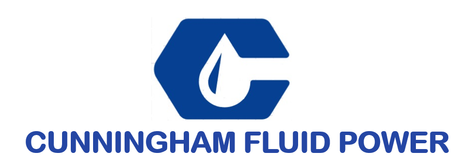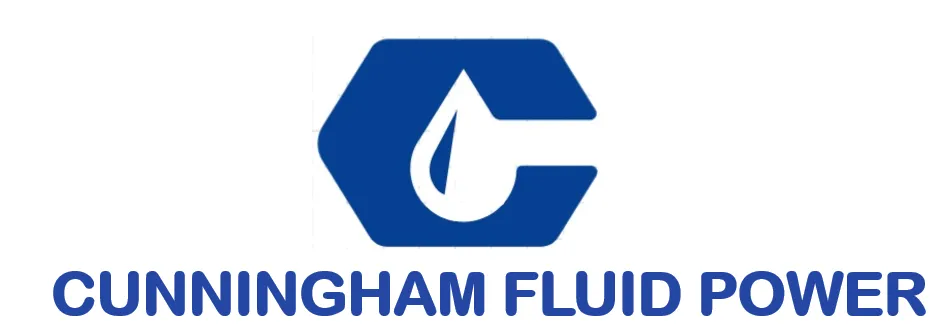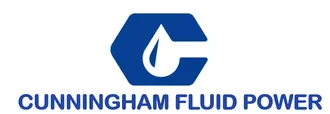What are the Key Features of Hydraulic Hose Fittings
Hydraulic Hose Fittings play a crucial role in ensuring the seamless operation of hydraulic systems, acting as the vital link between hoses, pipes, and equipment. Understanding the key features of these fittings is essential for anyone involved in the design, maintenance, or operation of hydraulic machinery. From their materials and pressure ratings to their compatibility with various fluids and environments, each characteristic contributes to performance, safety, and reliability.
In this blog, we will delve into the fundamental aspects of Hydraulic Hose Fittings that you need to consider when selecting the right fittings for your applications. Whether you are a seasoned professional or just starting in the field, grasping these features will empower you to make informed decisions and enhance the efficiency of your hydraulic systems.
Key Benefits of Using Hydraulic Hose Fittings in Industrial Applications
Hydraulic hose fittings are integral components in a wide variety of industrial applications, offering several key benefits that enhance system efficiency and reliability. According to the International Fluid Power Society, more than 70% of hydraulic system failures can be attributed to leakage and connection failures. By utilizing high-quality hydraulic hose fittings, industries can significantly reduce these issues. The precision engineering behind these fittings ensures a perfect seal, thereby minimizing the risk of leaks and maintaining system integrity.
Additionally, the versatility of hydraulic hose fittings plays a crucial role in optimizing operations across various sectors. A report by MarketsandMarkets indicates that the hydraulic hose market is expected to grow from USD 8.7 billion in 2020 to USD 10.7 billion by 2025, driven by increased demand in sectors like agriculture, construction, and manufacturing. The adaptability of hydraulic hoses and their fittings allows them to handle high pressures and a variety of fluids, making them ideal for diverse applications from excavators to conveyor systems. This flexibility not only enhances performance but also extends the life of hydraulic equipment, providing significant cost savings over time.
Key Benefits of Using Hydraulic Hose Fittings in Industrial Applications
Understanding Different Types of Hydraulic Hose Fittings and Their Uses
When considering hydraulic hose fittings, it's crucial to understand the various types available and their specific applications. Hydraulic hose fittings come in several forms, each designed for distinct purposes in industrial, agricultural, or construction settings. Common types include quick disconnects, swivel fittings, and crimp fittings, which serve to connect hoses securely while allowing for flexibility and ease of maintenance. For instance, quick disconnect fittings facilitate rapid hose changes, essential in mobile machinery operations, while crimp fittings ensure a robust seal under high pressure.
The demand for advanced hydraulic solutions is reflected in the growing hydraulic hoses market, projected to rise significantly in the coming years. This growth is driven by the need for reliable systems in various industries, including oil and gas operations, where tailored hoses and fittings are vital for safe and efficient operations. Additionally, innovation in storage solutions and the introduction of high-pressure hoses signal an industry trend towards enhancing functionality and performance. As companies expand their product ranges, the focus remains on durability and leak prevention, ensuring that hydraulic hose fittings can meet the demanding environments they are subjected to.
5 Essential Factors to Consider When Selecting Hydraulic Hose Fittings
When selecting hydraulic hose fittings, there are several essential factors to consider to ensure optimal performance and reliability. First, compatibility is paramount. It's vital to match the fitting materials with the type of hydraulic fluid being used, as different fluids can cause corrosion or degradation of certain materials. For instance, choosing fittings made from stainless steel can be beneficial when working with corrosive fluids, providing durability and longevity in a demanding environment.
Another crucial factor is the fitting size and configuration. Proper sizing ensures a secure fit and prevents leaks, which can lead to efficiency loss and hazardous situations. It's important to measure the hose diameter accurately and consider the fitting's thread type to guarantee a perfect seal. Additionally, working pressure is an essential consideration; hydraulic systems often operate under high pressure, so selecting fittings rated for pressures above your system's maximum is advisable to enhance safety and prevent failures.
Lastly, consider the ease of installation and maintenance. Some fittings are designed for quick-connect applications, allowing for faster assembly and disassembly, which can save time in high-turnover environments. Understanding your specific application and working conditions can help you choose hydraulic hose fittings that not only meet all the technical requirements but also simplify operational processes.
What are the Key Features of Hydraulic Hose Fittings - 5 Essential Factors to Consider When Selecting Hydraulic Hose Fittings
| Feature | Description | Importance | Example |
|---|---|---|---|
| Material | The composition of the fitting, which can affect durability and compatibility. | Ensures resistance to various fluids and operating conditions. | Steel, Brass, or Stainless Steel |
| Size | The diameter and thread size needed for proper connection. | Critical for ensuring proper fit and function. | 1/2 inch, 3/4 inch |
| Pressure Rating | The maximum operating pressure the fitting can withstand. | Essential for safety and efficiency in high-pressure applications. | 3,000 psi, 5,000 psi |
| End Configuration | The design of the fitting ends that connect to hoses or other components. | Affects the ease of installation and the reliability of the connection. | Swivel, Straight, Elbow |
| Temperature Range | The operational temperature limits of the fitting materials. | Vital for maintaining performance in extreme environments. | -40°F to 250°F |
How Proper Installation of Hydraulic Hose Fittings Enhances System Safety
Proper installation of hydraulic hose fittings is crucial to enhancing system safety and efficiency. When these fittings are installed correctly, they create a secure seal that prevents leaks, which can lead to dangerous hydraulic failures.
Additionally, ensuring that hoses are properly routed and supported reduces the risk of abrasion and other forms of wear, which can compromise the integrity of the entire hydraulic system.
Tips for safe installation include ensuring that all components are clean and free from debris before assembly. It's also important to avoid over-tightening fittings, as this can damage seals and lead to leaks.
Regular inspection and maintenance should not be overlooked; checking for wear and tear can help detect potential issues before they become serious problems.
Another crucial aspect is selecting the right hose fittings for the specific application.
Different environments require different materials to withstand pressures, temperatures, and other external factors. Always consult the manufacturer's specifications to ensure compatibility and safety, which ultimately prolongs the lifespan of the hydraulic system and maintains operational integrity.
Top Maintenance Tips to Extend the Life of Hydraulic Hose Fittings
Hydraulic hose fittings play a crucial role in ensuring the efficiency and safety of hydraulic systems. Regular maintenance of these fittings is essential not only for optimal performance but also for extending their lifespan. Here are some top maintenance tips to consider.
First, always inspect hydraulic hose fittings for signs of wear, corrosion, or damage. Look for any visible cracks, leaks, or loose connections. Conducting routine checks can help identify potential issues before they escalate, saving time and costs in the long run. Additionally, keeping fittings clean and free from dirt or debris will prevent contamination, which can negatively impact the performance of the entire hydraulic system.
Another important tip is to ensure that the fittings are properly torqued. Improperly torqued fittings can result in leaks or even hose failures. It's vital to follow the manufacturer's specifications for torque settings. Lastly, consider replacing worn or aging hoses and fittings proactively instead of waiting for a failure. Doing so minimizes downtime and enhances the reliability of your hydraulic equipment, ensuring smoother operations.

We have over 30 years of experience in designing complete hydraulic systems, repairs and distribution of fluid power equipment and parts.
FOLLOW US ON :
Contact Details
Address:
4020 SE 45th CT.
Ocala, FL 34480
Phone No:
Email:
sales@cunninghamfluidpower.com

